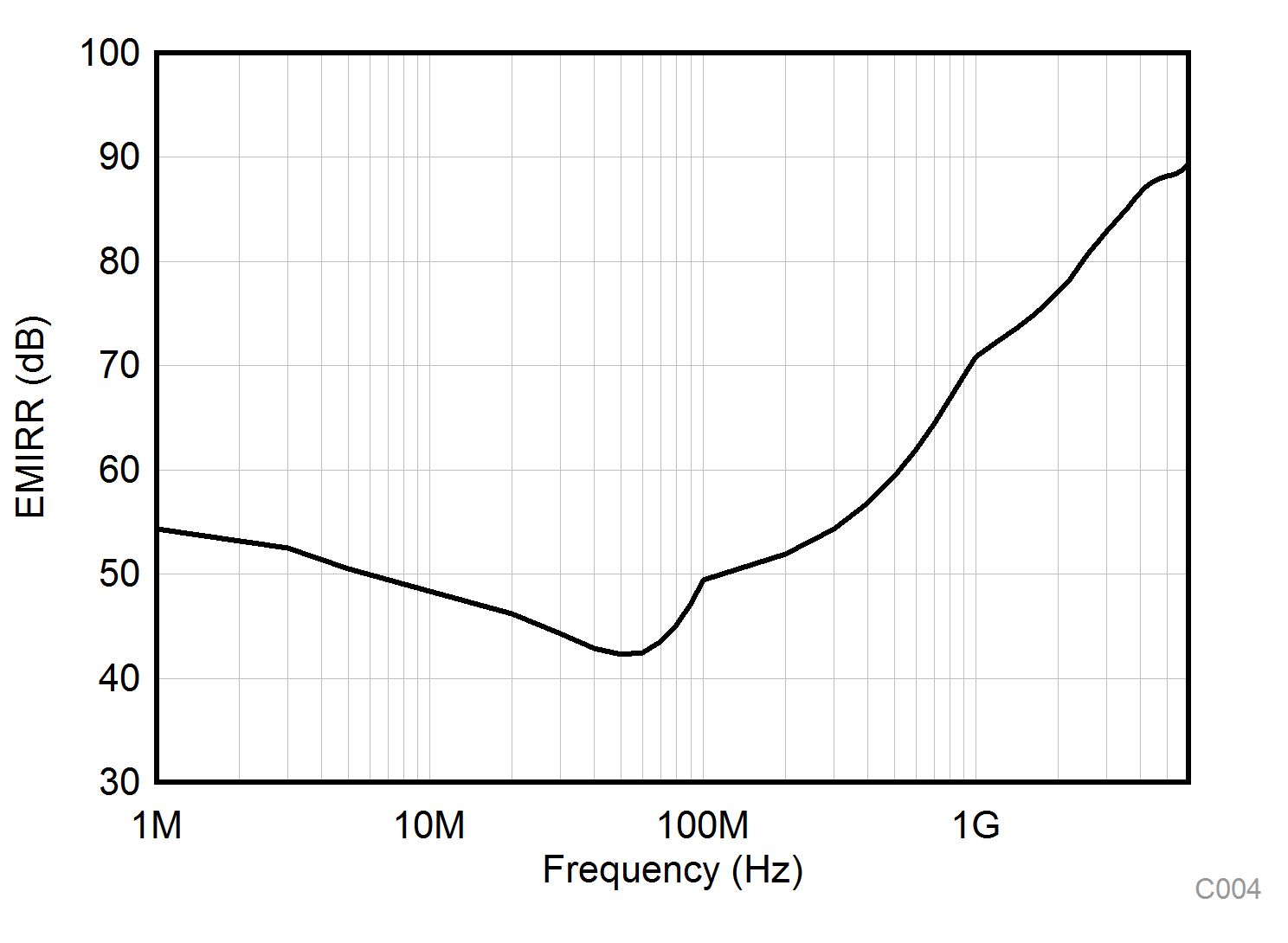JAJSRQ2A October 2023 – February 2024 OPA4990-Q1
ADVANCE INFORMATION
- 1
- 1 特長
- 2 アプリケーション
- 3 概要
- 4 Pin Configuration and Function
- 5 Specifications
- 6 Detailed Description
- 7 Application and Implementation
- 8 Device and Documentation Support
- 9 Revision History
- 10Mechanical, Packaging, and Orderable Information
パッケージ・オプション
デバイスごとのパッケージ図は、PDF版データシートをご参照ください。
メカニカル・データ(パッケージ|ピン)
- PW|14
サーマルパッド・メカニカル・データ
発注情報
6.3.2 EMI Rejection
The OPAx990-Q1 uses integrated electromagnetic interference (EMI) filtering to reduce the effects of EMI from sources such as wireless communications and densely-populated boards with a mix of analog signal chain and digital components. EMI immunity can be improved with circuit design techniques; the OPAx990-Q1 benefits from these design improvements. Texas Instruments developed the ability to accurately measure and quantify the immunity of an operational amplifier over a broad frequency spectrum extending from 10MHz to 6GHz. Figure 6-3 shows the results of this testing on the OPAx990-Q1. Table 6-1 provides the EMIRR IN+ values for the OPAx990-Q1 at particular frequencies commonly encountered in real-world applications. For detailed information on the topic of EMIRR performance as it relates to op amps, see the EMI Rejection Ratio of Operational Amplifiers application report.
 Figure 6-3 EMIRR
Testing
Figure 6-3 EMIRR
Testing| FREQUENCY | APPLICATION OR ALLOCATION | EMIRR IN+ |
|---|---|---|
| 400MHz | Mobile radio, mobile satellite, space operation, weather, radar, ultra-high frequency (UHF) applications | 59.5dB |
| 900MHz | Global system for mobile communications (GSM) applications, radio communication, navigation, GPS (to 1.6GHz), GSM, aeronautical mobile, UHF applications | 68.9dB |
| 1.8GHz | GSM applications, mobile personal communications, broadband, satellite, L-band (1GHz to 2GHz) | 77.8dB |
| 2.4GHz | 802.11b, 802.11g, 802.11n, Bluetooth®, mobile personal communications, automotive, scientific and medical (ISM) radio band, amateur radio and satellite, S-band (2GHz to 4GHz) | 78.0dB |
| 3.6GHz | Radiolocation, aero communication and navigation, satellite, mobile, S-band | 88.8dB |
| 5GHz | 802.11a, 802.11n, aero communication and navigation, mobile communication, space and satellite operation, C-band (4GHz to 8GHz) | 87.6dB |